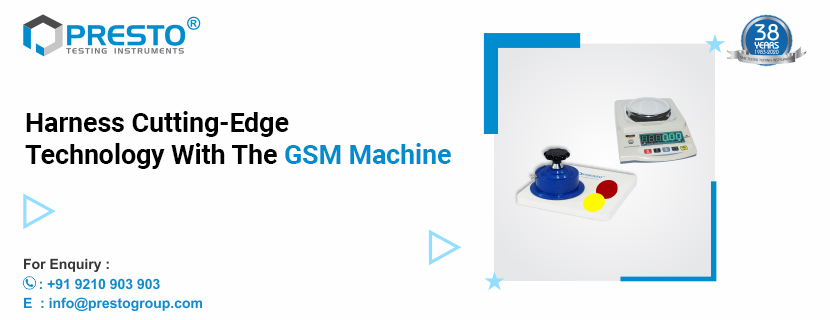The Testing Instruments Round Cutter is designed for Grammage GSM measuring and provides precision circular cutting for sample analysis. This gsm cutter machine accurately cuts circular specimens of 100 cm² or 1/100th of a square meter. The resultant value, when multiplied by 100, yields the Grams per Square Meter (GSM), which is computed as Specimen Weight in Grams multiplied by 100.
The Round Cutter for Grammage includes four built-in knives. Revolving the handle knob a quarter of a turn creates a circular sample of 100 cm². The Round Sample Cutter is suitable for cutting samples from paper, single-layer boards, foils, textiles, and multilayer boards (corrugated boards).
The gsm machine's design and careful production ensure that the specimens are perfectly round with smooth edges. The new rubber-foam pad included in this high-quality lab testing device will make it easier for manufacturers to securely position the test specimen. This gsm tester cutter is versatile and may be utilized in a variety of sectors, including printing, packaging, leather, belts, polyester and BOP films, and many more. It includes a safety clasp to prevent overtravel. Testing Instruments provides trustworthy GSM round cutter pricing to clients. This laboratory testing device allows users to cut samples properly and smoothly.
Understanding How GSM Cutters Work
Here's a deeper look at how GSM cutters work to offer precise and consistent measurements:
Mechanism and Components
-
Cutting Mechanism: GSM cutters have a precise cutting mechanism, often powered by a lever or rotary action. This mechanism guarantees that the cutter consistently slices a predetermined portion of the material sample. The size of the cutting area varies based on the type and standard being used.
-
Sample Holder: A robust sample holder helps secure the material while cutting. This holder is required to prevent movement or distortion of the sample.
-
Balance and Weighing System: After cutting, the sample is carefully transported to a precise balance integrated with the GSM cutter. This balance is sensitive enough to precisely determine the weight of the sample. The sample's weight is then reported in grams.
-
Calculation of GSM: The GSM is determined using the following formula:
-
The sample area is defined by the size of the cutting area, which is a specified measurement based on the substance being examined.
Operational Steps
-
Preparation: To guarantee accuracy, calibrate the GSM cutter before taking measurements. This includes testing and calibrating the cutting mechanism, validating the balance calibration, etc.
-
Cutting: Place a material sample in the sample holder, then engage the cutting mechanism to cut off the desired region. Precision is essential at this stage to achieve consistent outcomes.
-
Weighing: Carefully transfer the cut sample to the GSM cutter's inbuilt balance. The balance shows the weight of the sample in grams, which is recorded for future calculations.
-
Calculation: The GSM is determined using the previously given algorithm, taking into account the observed weight and preset cutting blade area. This computation yields the material's grams per square meter measurement, which indicates its density and weight per unit area.
Applications in several industries.
GSM cutters are used in a variety of sectors.
-
Textile production relies heavily on GSM measurements to ensure consistent fabric quality and performance. GSM measurement allows producers to check fabric density and weight, ensuring they satisfy the required design and functional requirements.
-
The paper industry also uses paper gsm tester to test the density of paper goods. Paper makers can ensure the strength and durability of their goods for a variety of purposes, including printing and packaging, by acquiring correct GSM measurements.
-
Packaging materials, such as cardboard and films, must have a constant GSM to ensure proper strength and protection. GSM cutters allow package producers to test the material density.
Calibration for GSM Cutter Machine
GSM cutters must be calibrated on a regular basis to ensure their accuracy and dependability. Calibration methods usually include:
Weight Verification: Using calibrated weights to guarantee the cutter's balance is exact, reducing measuring mistakes.
Blade Sharpness: Ensure that the cutting blade is sharp and in good condition to make precise cuts. Dull blades can cause anomalies in cut dimensions and impact GSM readings.
Periodic maintenance entails doing periodic tests and maintenance to avoid variations in measurement accuracy over time. This involves the cleaning, lubrication, and inspection of essential components.
FAQs for GSM Cutters
Q1) How do GSM cutters achieve accurate measurements?
A1) GSM cutters include precision-engineered blades and cutting mechanisms that provide a constant and defined cutting area. This precision reduces changes in sample dimensions, increasing the accuracy of GSM measurements.
Q2) Can GSM cutters handle a variety of materials?
A2) Yes, GSM cutters can handle a variety of materials, such as textiles, papers, films, and non-woven fabrics. GSM cutters can accept different material thicknesses and densities by adjusting their cutting settings and blade choices.
Q3) What are the most typical issues connected with GSM measurements?
A3) Variations in material thickness, abnormalities in cutting method, and environmental conditions that impact weighing accuracy are all potential challenges. Manufacturers address these difficulties by frequent calibration and adherence to defined methods.
Book the Testing Instruments gsm cutter NOW!
Reach out to us through a phone call at +91 9210903903 or directly dropping us an e-mail at info@prestogroup.com.
